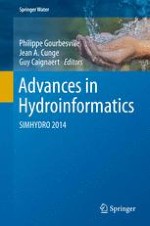2016 | OriginalPaper | Chapter
A Stochastic Model for Particle Deposition in Turbulent Flows and Clogging Effects
Authors : Céline Caruyer, Jean-Pierre Minier, Mathieu Guingo, Christophe Henry
Published in: Advances in Hydroinformatics
Publisher: Springer Singapore
Activate our intelligent search to find suitable subject content or patents.
Select sections of text to find matching patents with Artificial Intelligence. powered by
Select sections of text to find additional relevant content using AI-assisted search. powered by
